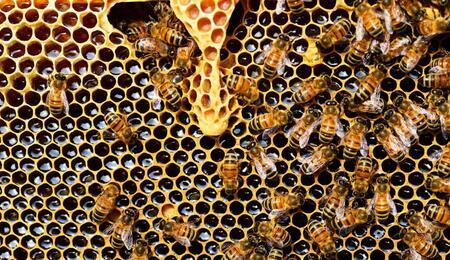What is Mad Honey?

As far as cannabis is concerned, we all know of its incredible benefits. Some people consume the plant and its extracts for strictly medical reasons; others take it for enjoyment or the mind-altering effect cannabis is known for. However, nature has a diverse supplement of hallucinogenics, some of which are underresearched, and the public generally has little knowledge about it. One such example is "Mad Honey," traditionally cultivated as medicine in countries like Nepal and Turkey.
Rhododendron flowers are pretty common around the planet. There are hundreds of types of rhododendrons growing from Washington D.C. to the Himalayas. In some places, such as Nepal or Turkey, bees source rhododendron pollen and produce a hallucinogenic type of honey, aka mad honey. Nepalese and Turkish honey hunters have been familiar with this type of nectar for centuries.
Mad honey is runnier than regular honey. It has a reddish, dark color and a slightly bitter taste. That is due to grayanotoxin, a group of neurotoxins found in the nectar of particular rhododendron flowers.
Grayanotoxin can strike a series of physiological reactions when ingested into the organism. The neurotoxins are present in all plant parts, including flowers, leaves, stems, nectar, and pollen. Which explains why traces of this specific compound end up in secondary products such as honey.
In small amounts, "mad honey" slows the heartbeat and can cause mild highs and hallucinations. Overconsumption can lead to diarrhea, fainting, temporary paralysis, and according to some ancient Greek texts—severe poisoning and even death. There hasn't been a recorded death caused due to mad honey poisoning in recent history, however, the substance is no joke!
Nepalese villagers believe that taking a single teaspoon of mad honey once or twice a year strengthens the immune system. The Nepalese attribute several other medical benefits to this unique type of honey, including its use for treating diabetes, hypertension, and arthritis pain. The hallucinogenic is also billed as a superior aphrodisiac.
However, the most common use of mad honey among Nepalese is as a natural painkiller to alleviate pains from physical work and improve their mood, just like you would smoke a small joint at the end of your work shift.
While eating mad honey can cause unwanted side effects, collecting it from mountainous terrains, such as in the Himalayas, is a challenge in its own right. Rhododendrons rich in grayanotoxins thrive at high altitudes, and bees store the honey at secluded, difficult-to-access locations. Nepalese honey hunters often need to make dangerous maneuvers to collect the special produce, all while enduring painful stings from the bees.
Mad honey came to notice in the west during the 18th-century. The Black Sea region exported the potent nectar to Europe, where the honey was added in drinks, served to those who wanted something stronger than regular booze.
Today, there's a rising market for mad honey in northeast Asia. The psychedelic honey is becoming ever more popular in China, Japan, and Korea, despite some of these countries having a rigid stance on any substance with mind-altering properties. On the black market, a pound of mad honey can sell for over $60-$70. And while you might think most buyers show interest in mad honey because it can give you a new kind of high, rumor has it, its best appeal seems to be its potential to treat erectile dysfunction. Well, that still kills two birds with one stone!

.jpg)

